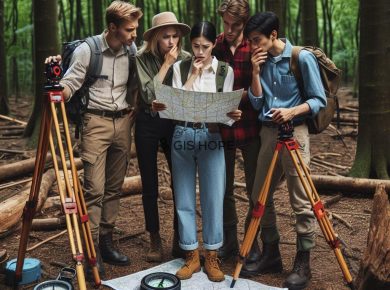In today’s digital age, the world is at our fingertips, waiting to be explored from the comfort of our own homes. Geo-adventures offer a unique opportunity to embark on virtual journeys, discover new places, and immerse ourselves in different cultures and landscapes without ever leaving the living room. This essay serves as a guide to geo-adventures, providing tips, resources, and inspiration for armchair travelers and geography enthusiasts eager to discover the world from their screens.
Exploring the World Virtually
With the advent of digital mapping tools and immersive technologies, exploring the world virtually has never been easier. From interactive maps and 3D globes to virtual reality (VR) experiences and live webcams, there are countless ways to discover new destinations and experience distant landscapes in stunning detail. Whether you’re navigating the streets of Paris, trekking through the Amazon rainforest, or stargazing under the Northern Lights, virtual exploration offers endless possibilities for adventure and discovery.
Digital Mapping Tools and Platforms
Digital mapping tools and platforms provide a gateway to virtual exploration, offering a wealth of geographic information and interactive features. Google Earth allows users to explore 3D satellite imagery, terrain maps, and Street View panoramas of locations around the globe. Mapping applications like Mapbox and ArcGIS Online provide customizable maps and spatial analysis tools for creating personalized geo-adventures. Social media platforms such as Instagram and Pinterest are also valuable resources for discovering travel inspiration, user-generated content, and virtual tours of popular destinations.
Immersive Experiences and Virtual Tours
Immersive experiences and virtual tours offer a more interactive and engaging way to explore the world from home. Museums, landmarks, and cultural sites worldwide offer virtual tours and 360-degree panoramas that allow users to roam freely and learn about different cultures, histories, and natural wonders. VR headsets and augmented reality (AR) applications enhance the sense of immersion, transporting users to far-off destinations and providing a sense of presence and realism.
Armchair Traveler’s Guide
As an armchair traveler, there are several tips and strategies for maximizing your virtual exploration experience:
- Plan Your Adventure: Research destinations, landmarks, and attractions that pique your interest and create a virtual itinerary.
- Get Hands-On: Experiment with digital mapping tools and platforms to create custom maps, mark points of interest, and plan your route.
- Dive Deep: Take advantage of immersive experiences and virtual tours to explore destinations up close, learn about their history and culture, and interact with local guides and experts.
- Stay Connected: Share your geo-adventures with friends and fellow travelers on social media, join online communities and forums, and participate in virtual events and challenges.
In conclusion, geo-adventures offer an exciting opportunity to discover the world from the comfort of your own home, opening new horizons for armchair travelers and geography enthusiasts alike. With digital mapping tools, immersive experiences, and virtual tours at your fingertips, the possibilities for exploration are endless. Whether you’re traversing remote landscapes, uncovering hidden gems, or immersing yourself in different cultures, virtual exploration allows you to broaden your horizons and embark on unforgettable journeys without ever stepping outside. So, grab your digital passport and get ready to discover the world from your living room!
References
- Kitchin, R., & Dodge, M. (2019). “Atlas of Cyberspace.” Routledge.
- Elwood, S. (2010). “Geographic Information Science: Emerging Research on the Societal Implications of the Geospatial Web.” Progress in Human Geography.
- Green, T., & Mayhew, S. (2019). “The Great Global Bucket List: One-of-a-Kind Travel Experiences.” Dundurn.
- Shneiderman, B., & Plaisant, C. (2016). “Designing the User Interface: Strategies for Effective Human-Computer Interaction.” Pearson.





